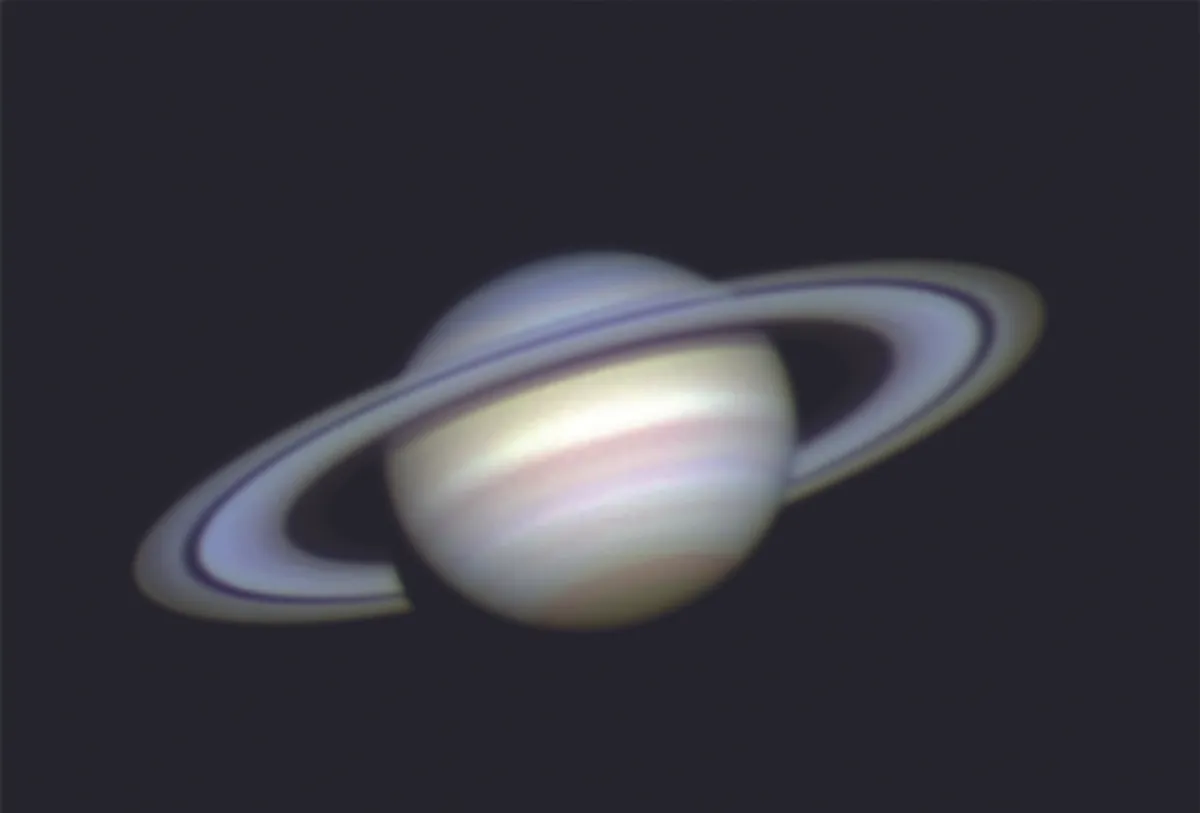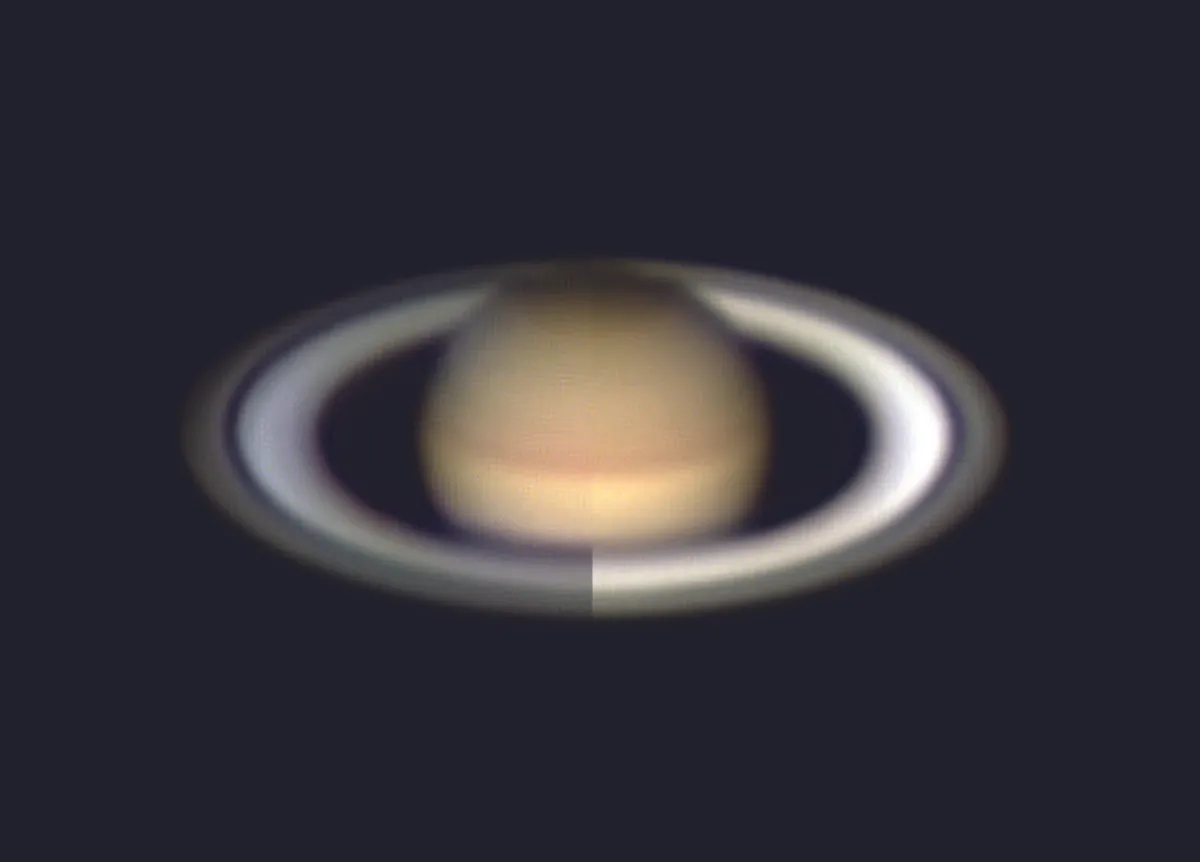Saturn is a major gas planet but the amount of detail it shows through amateur scopes is significantly less than its inner neighbour, Jupiter.
This is because of the high layer of haze in its atmosphere and its greater distance from the Sun. Consequently Saturn’s atmospheric features are far more subtle in appearance.
Bright spots on its disc represent the presence of Saturnian storms. Observing and recording such events is extremely important and programs such as WinJUPOS can be used to measure their position and track drift.
Occasionally, larger long-lived events, such as the ‘Dragon Storm’ of 2010/11 (a large, bright and complex convective storm in Saturn’s southern hemisphere), break out and appear to spread through many degrees of longitude.

Frequent imaging is encouraged to help provide a global record of these infrequent events.
In addition to the appearance of storms in Saturn’s atmosphere, the planet also shows a series of belts just like those seen in Jupiter’s atmosphere.
However, unlike the Jovian belts, Saturn’s appear far less prominent and detailed. Despite this, images taken through different filters can provide important information as to how the intensity of the belts changes.
Read more astrophotography guides:
- Remove the effects of twilight from your astronomy astrophotos
- How to use WinJUPOS
- Using flat frames to calibrate your astrophotos
When Saturn is presented with a high tilt angle, an interesting exercise is to try to record phenomena found at the polar regions, such as the northern hemisphere’s polar hexagon.
Between 2012 and 2016, the hexagon changed from mostly blue to more of a golden colour, so those this is definitely an interesting, dynamic feature for amateur astronomers to chronicle.

Of course, a major feature of this beautiful world are its magnificent rings and monitoring them for subtle variations in intensity is another important project for amateur imagers.
The presence and appearance of radial ‘ring spokes’ is of particular interest. Imaged and animated by orbiting spacecraft, this phenomena has been reported by visual observers many times too.
Capturing an animated sequence showing ring spoke movement from Earth would be a very valuable record indeed.
As with most planets, the use of filters can enhance the contrast of certain features. As ever, it’s important to accurately record the date, time and which filters have been used to produce each image.

Useful hardware & software
Hardware
- High-frame-rate cameras
- RGB imaging filters for use with a mono camera
- Speciality filters, eg, longpass
- Filter wheel
- Atmospheric dispersion corrector
- Large-aperture, long-focal-length telescope on a driven mount
- A laptop
Software
- WinJUPOS freeware
- Capture software, e.g. FireCapture or SharpCap
- RegiStax
- AutoStakkert!
- Image editor, e.g. GIMP or Photoshop
Pete Lawrence is an experienced astrophotographer and a co-presenter on The Sky at Night.
